
Bot estuary breach has had some interesting developments. Check the first post on the Bot Estuary breached 2020. The estuary has now closed in less than a month. Was the estuary breached in the right place?
When the estuary was breached, a huge sand dune of recent blowing sand, was washed out to sea. Now a huge, old, stable section with vegetation growing on it has been eroded by the sea as well. Most of this has been deposited on the sand spit.

The above picture of the estuary, before the breach showing the old line of the sea, with the location of the recently blowing sand dune and the vegetated old dune.
In the picture below note the strong waves in the background continuing to erode the vegetated dune and the Blowing sand dune has been removed altogether. The shallow foreground waves which have exhausted all their energy against the underwater sand spit are redepositing sand to close the estuary.

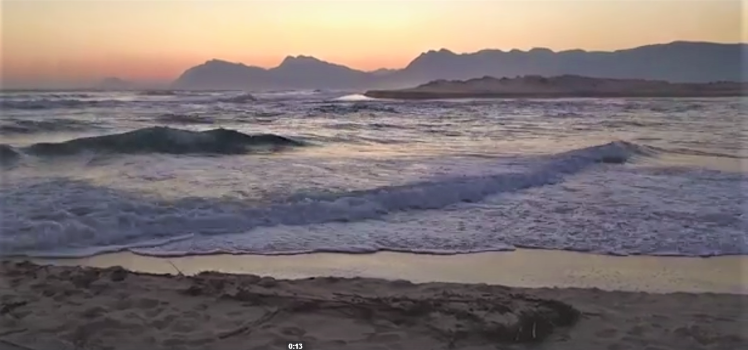
A recent picture showing the blowing sand dune flattened and strong waves starting to erode the vegetated dune a week after the breach. In the foreground is the old level of the bar closing the estuary before the breach, about 3 meters higher than mean sea level.
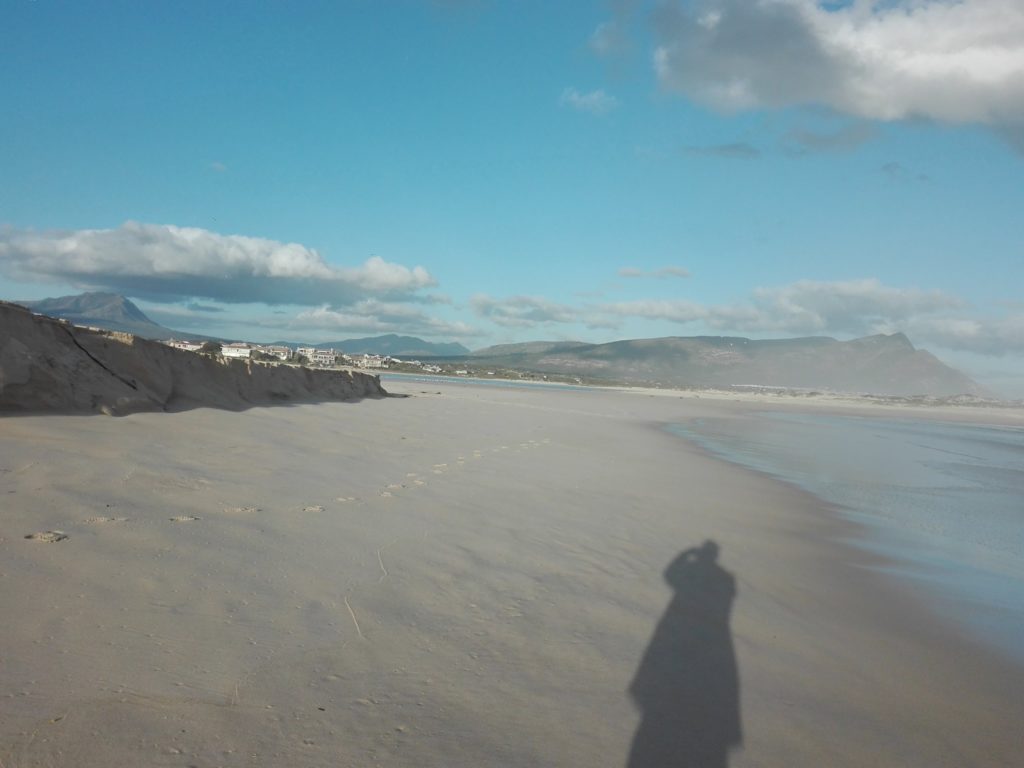
The combination of sand from the initial breach and the eroding old dune has caused a huge bar of sand extending straight out to sea and partially closed the estuary mouth. The picture above shows the estuary separated from the sea by sand with very little water washing into the estuary. The mouth was effectively closed by the 14 August, just over three weeks from the breach. The blowing sand dune which got eroded away is pictured below, before the breach.
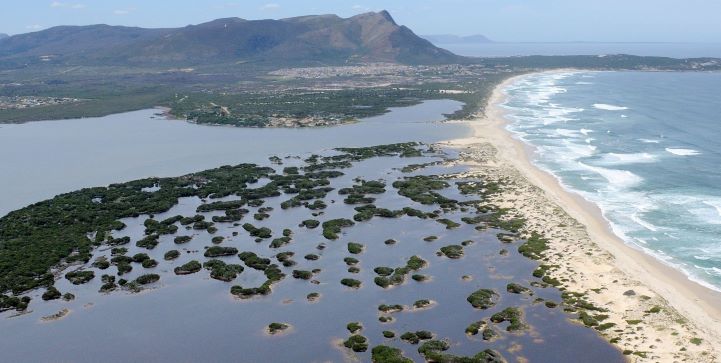
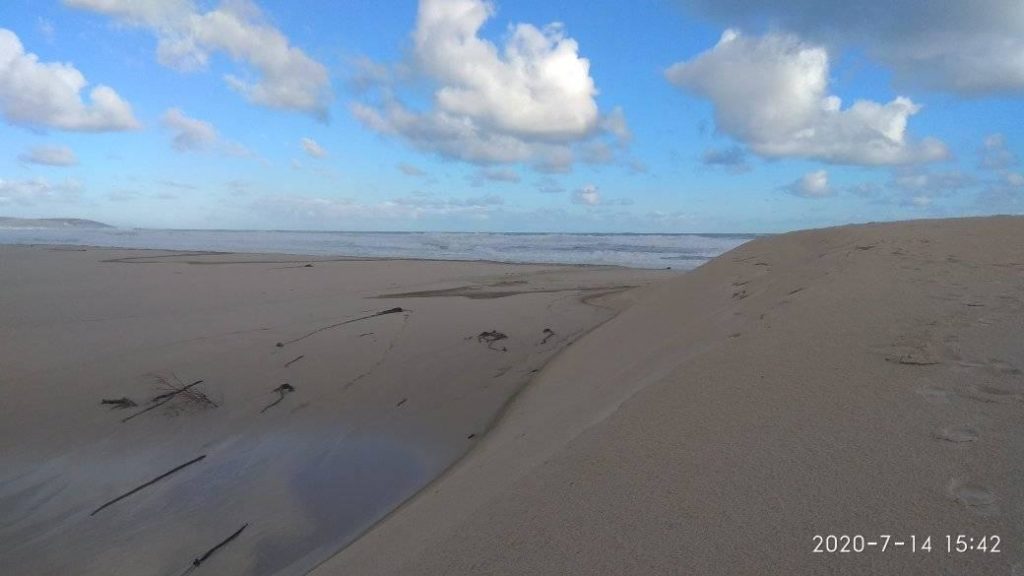
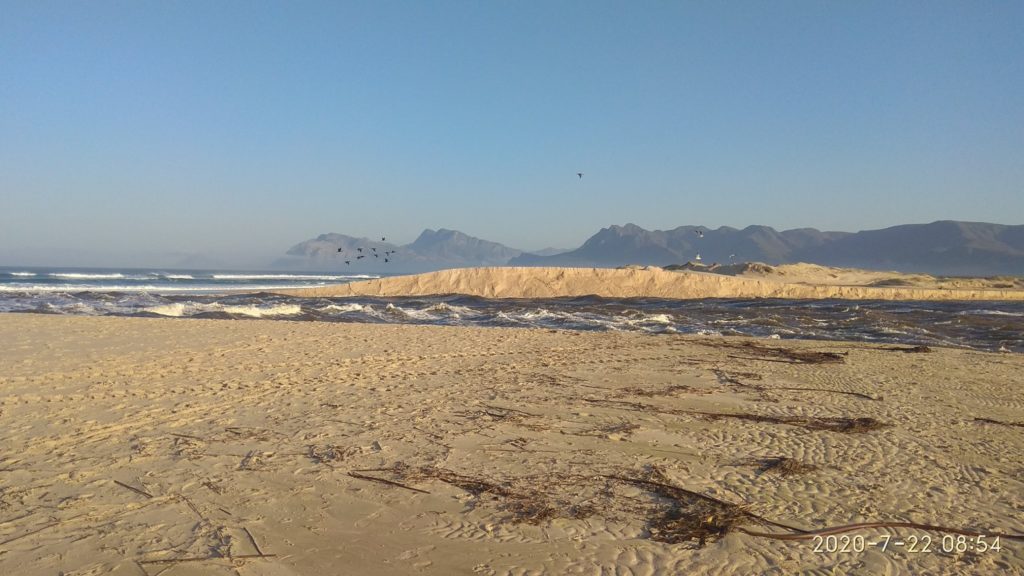
On the morning of the breach, the blowing sand dune is been eroded out to sea, in the picture above. The vegetated dune is in the background. By the next day all of the blowing sand dune is gone, and what is left is the vegetated dune which has also started to erode.
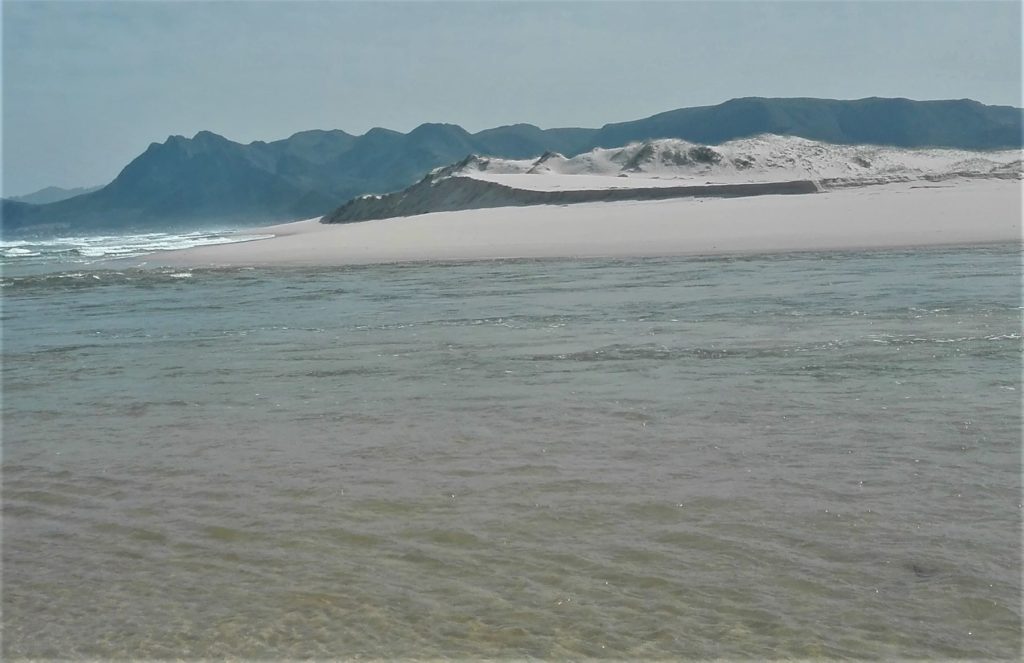
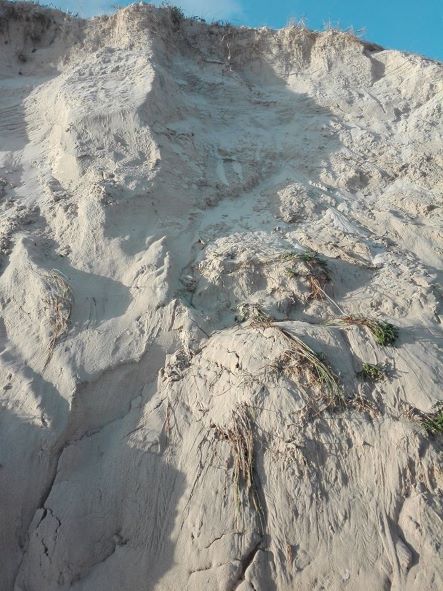
The old stable sand dune eroding ( much of it more than 6 m high) and getting left in the estuary mouth and getting carried out to sea at low tide.
The picture above also shows the estuary section of the old dune eroding. The new spit of sand stretching out to sea, stops the main waves from coming in close to shore, and is generating cross waves at right angles to the main waves against the sand spit going out to sea. This has the effect of increasing the height of the spit, further reducing the impact of the waves and depositing more of this sand across the breach mouth.
The net effect is that the sand bar is increasing in size with only small waves washing in, interrupted by cross waves in both directions. At high tide very little water is washing over the lowered bar of sand which is now blocking the estuary and having further sand added to it. Even with the good rains recently it has not opened again. The further developments indicate that the Bot estuary breach was in the wrong place.
The spit of sand is steadily moving east as the direction of the swell comes from a little to the west of south, the prevailing wind direction. However, this will take months to get moved. The big swells arriving at the tip of the spit of sand get channelled to the left and right of the spit. This causes bigger waves especially on the west side of the breach. This has caused additional erosion of the old vegetated dune. The old beach and much of the dune (+6m high) is eroded with deep water right up against the dune. Some evidence of this is also present to the east, opposite the plank bridge where even with a not particularly big swell, erosion of the old vegetated dune is now starting to occur.
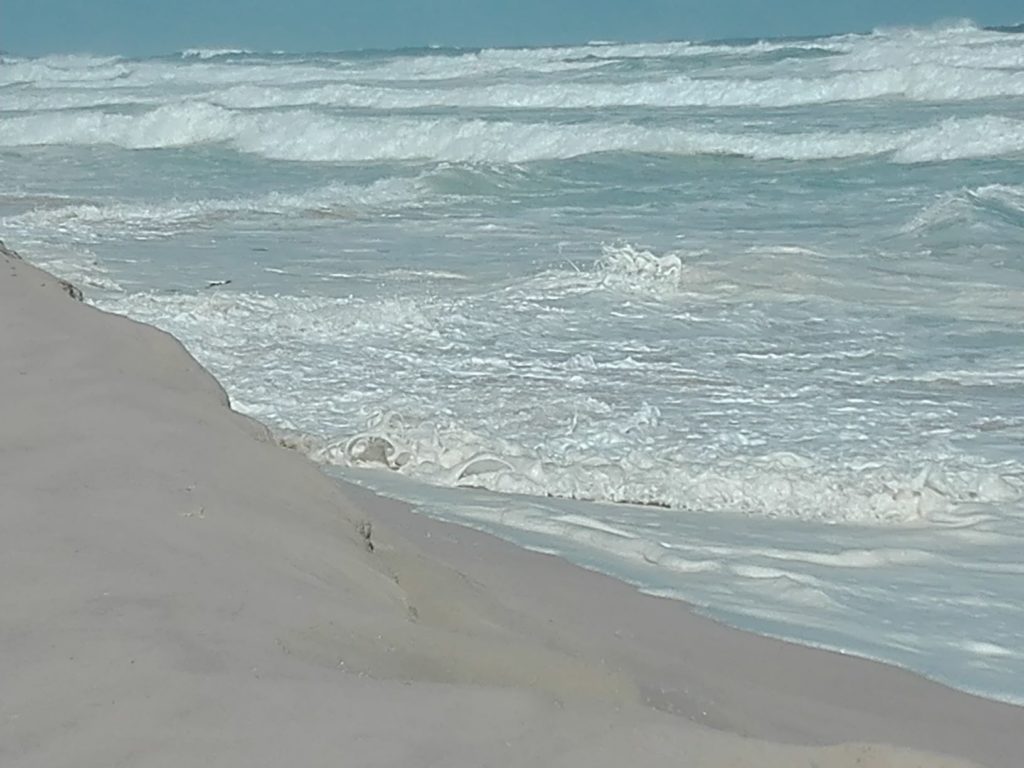
The above picture was taken at 90 minutes before high tide, and the sea is eroding the dune and coming over the top of the dune. This is at the same time that small waves depositing sand were arriving at the breach point. The breach area is only about 600-700mm above sea level a few days after it closed again. With the spit in the sea, diverting water both to the left and right of the spit, sea water is barely washing over the new bar blocking the estuary. Most of the sand from the large eroding old dune is getting washed into the breach or just into the sea onto the spit. This is effectively building the closure of the breach higher each day. The level of the estuary is steadily increasing each day with all the additional water input from the good rains. The estuary may breach again depending on the balance between the water input and sand build up. The erosion of the old dune may cause a new opening to the west of the old opening as the sand spit is steadily getting moved eastwards.
The estuary is steadily filling up with water both from fresh water and the sea to a limited extent, the input from the sea is rapidly reducing.
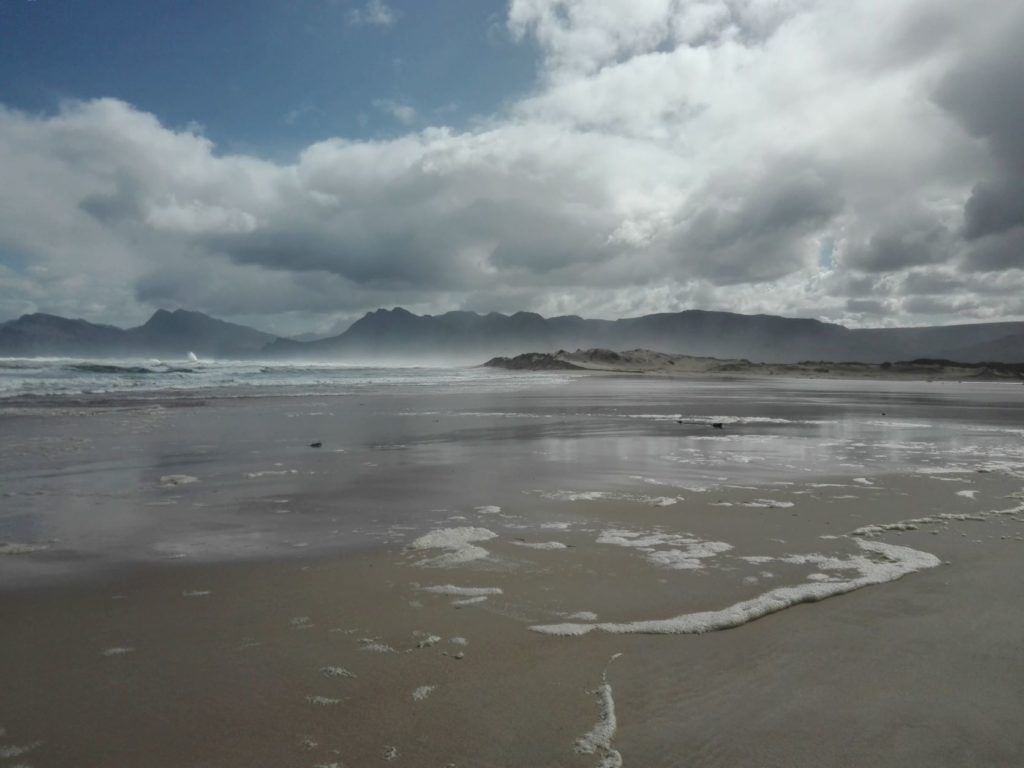
Was the Bot estuary breach in the right place, further developments indicate that this was not the case. Advise from knowledgeable fishermen on the day of the breach was ignored. Can the breaching committee justify their decision to breach where they did?
There is much speculation about whether the estuary was opened in the right place. The second picture, in this post, with a low level to the estuary clearly shows the deepest part of the estuary, at that time. The breach was done to the east of this point. However, it expanded mostly to the west even though there was a relatively recent sand dune in the way and it removed this in a day with nearly 3m of accumulated water in the estuary. The waves which were washing into the estuary at high tide added huge volumes of water which then flowed out again at low tide. This sand got deposited onto the spit of sand caused by the initial breach. The additional large volume of sand eroded from the old dune, initially increased the height of the spit which reduced the size of the waves washing into the estuary. These smaller waves then started depositing sand across the breach and adding much less water into the estuary at high tide. A turning point was reached where the estuary did not run out at low tide and scour this sand away.
The changes in the dynamics of the breach and the position of the breach, causing a great deal more sand to be involved from the erosion of the old dune to the west of the breach has caused the closing of the estuary much sooner than expected.
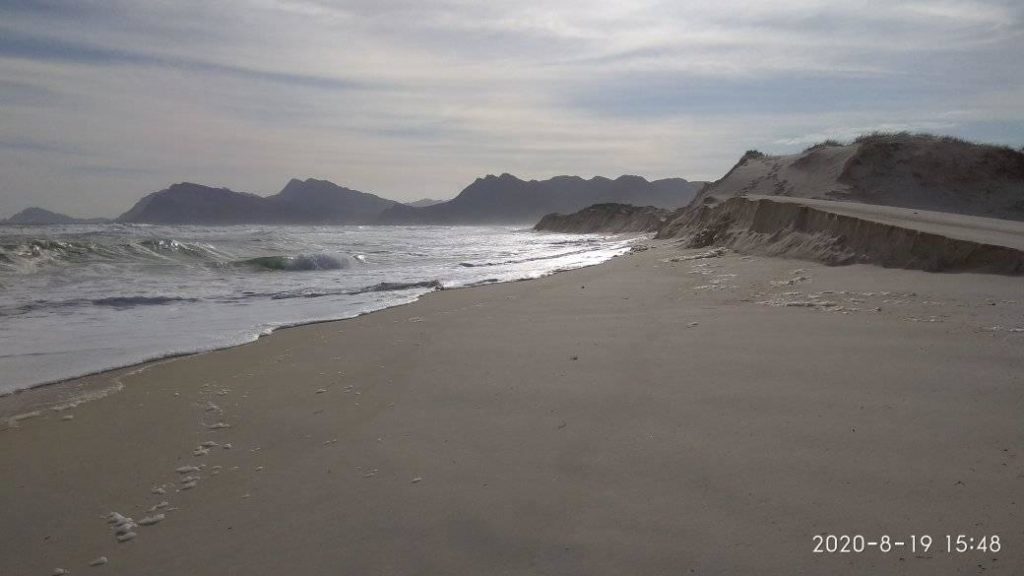
Generally, the sand in the sea and the beach sand is moving to the west. However this is a slow process and may take many months. Had the estuary been breached more to the east it probably would have delivery its sand more to the east, with an angled input into the sea. The main addition of sand to the established spit directly out to sea was from the erosion of the old sand dune, which finally tipped the balance to closing the estuary. This sand was delivered close to shore, reducing the wave impact, lessening the wave input into the estuary at high tide. There was, therefore, much less water to flow out and re-scour the entrance to the sea, causing more build of sand and closing the estuary.
Without the huge input of sand from the old dune, the estuary would probably have stayed open for very much longer with daily scouring from the changing tides supplemented by the continuing strong fresh water inflow. When the strong fresh water input reduced, the estuary would have closed anyway.
There are many different dynamics acting on the system, volume of fresh water input, volume of sea water input, position and volume of sand deposit, height of the tides and weather the waves are eroding or depositing sand. The present balance is steadily closing the estuary with sand, helped by all the additional sand from the old dune which has remained in place for many years through previous breaches.
The question is whether this breach, so short lived after five years of no breach has achieved the stated objectives of breaching the estuary. The pictures of the 2015, 2012 and 2008 breaches show a more open mouth with the sea washing into the estuary at high tide much further and for much longer.
The Bot Estuary breach, it will be interesting to monitor further developments, as the dynamic are changing rapidly.
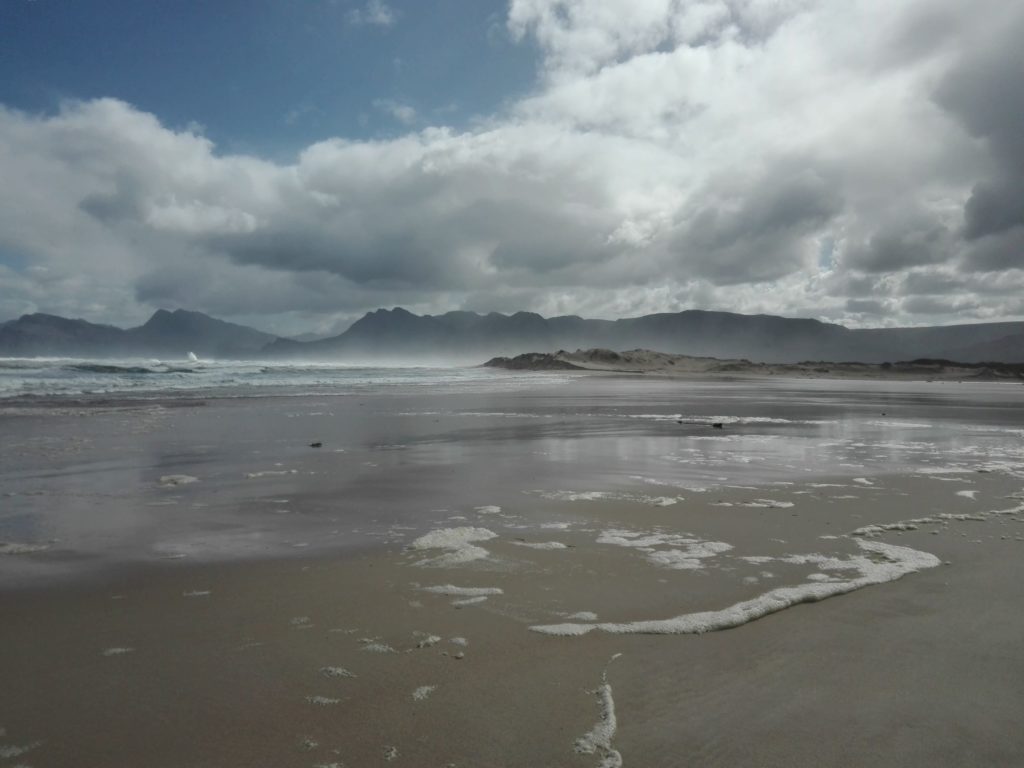
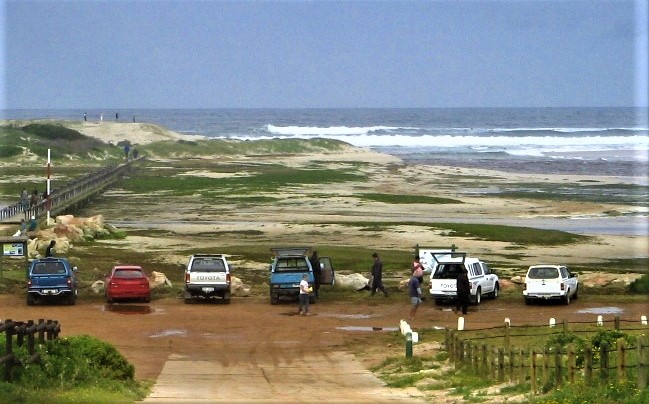

A number of the pictures provided here were from other sources, Jean Tresfon for the great aerial pics and Megan . Check out their sites.

Recent Comments